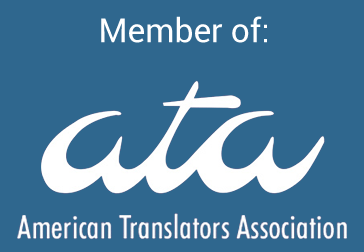Beyond Google Translate: Why You Need a Professional Translator
Translation is a relatively small field, and most people don’t know much about it. As a result, misconceptions abound. I could link to a dozen humorous articles about people’s efforts to translate texts using a bilingual dictionary or Google Translate, with embarrassing results. (Here’s a personal favorite!) All of us use language constantly every day, even when we’re not communicating with anyone—after all, even our thoughts are coded in words. So language is deeply familiar to us. In addition, most of us have some experience learning another language, and a lot of people mistake the way the brain grapples with language in the beginning stages of that process for what the translation process is like. I remember fifth-grade French lessons. Voici le livre = Here is the book. Doesn’t seem that complicated.
So maybe that’s why so many people, when they need a translation, think that merely speaking two languages qualifies a person to be a translator. Even if they’ve recognized that they need a real live human being to get the best possible results, they still may not have a real grasp of what, exactly, a translator is doing that makes his or her output superior to that of a computer program. Too often, then, they fail to take the next step of finding the right human being—a translator.
It’s easy to recognize the concrete failures of machine-translated texts: the misunderstanding of idioms, vocabulary gaps that leave obscure or regional or colloquial words untranslated, the inability to choose the right option when the original could be one of several possibilities (for example, in Spanish, “his,” “her,” and “their” are the same word, and a computer program never seems to choose correctly), and so on. Because of these egregious failures, we tend to not even look past those to note the other problems that machine translations produce: awkward syntax, shifts in tone, plenty of moments of “nobody says that” resulting from a too-literal rendering of the original. And unfortunately, these problems won’t necessarily be solved by enlisting the closest accessible bilingual person to translate your text for you.
A good translation doesn’t just approximate the gist of the original text; it captures not only meaning with great accuracy but also tone, nuance, and other elements. It is an effective piece of writing. To produce high-quality translation, you need a person who both understands the original (source) language and is highly skilled at using the target language: in short, a good writer who happens to speak more than one language. While a bilingual friend or the woman down the hall may be able to communicate in two languages, that’s only the first step. The next, and just as crucial, question is whether they can communicate compellingly. Good translators have years of experience transferring meaning between multiple languages, have studied both languages intensively, and are familiar with the pitfalls of their language pairs and how to avoid them.
Because we all live within language at every moment, the translation process can seem deceptively simple to those who have little experience with it. Too often, people rely on inexperienced translators and end up with awkward texts that are rife with errors. It is well worth the extra effort to seek out the services of a skilled professional translator to make sure your texts are rendered as effectively as possible in the target language.

Live Customer Support Hours Sun.-Thurs. 8 a.m. to midnight CT and Fri.-Sat. 8 a.m. to 6 p.m. CT
Submit Documents 24/7
Contact Us 855-500-2720

